Key takeaways
- Manual mode allows full creative control over exposure settings—shutter speed, aperture, and ISO—transforming photography into a more personal and artistic endeavor.
- Understanding and balancing ISO, aperture, and shutter speed is crucial for achieving desired effects, such as sharp action shots or dreamy backgrounds.
- Bracketing shots at different exposures can enhance confidence in manual settings and help in learning what works best in various lighting conditions.
- Embracing creativity through manual mode encourages experimentation and fosters a deeper appreciation for photography as a form of art.
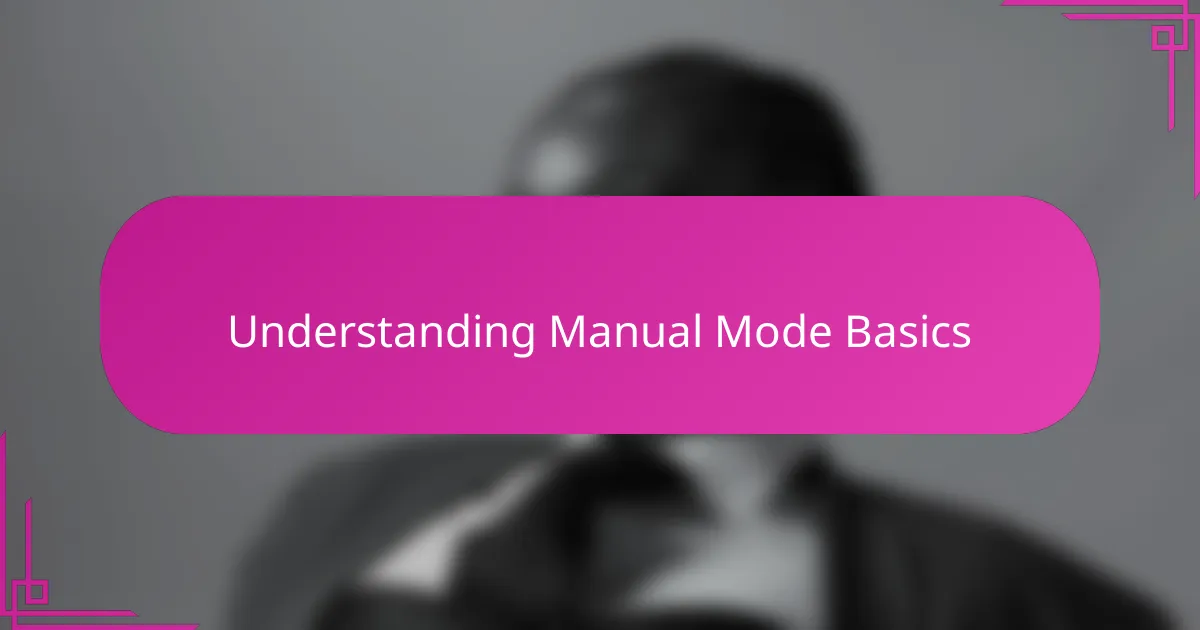
Understanding Manual Mode Basics
Manual mode on a Nikon camera puts you in full control, letting you decide how much light hits the sensor by adjusting shutter speed, aperture, and ISO. At first, this felt intimidating to me—like learning a new language—but I quickly realized it’s more about trusting my eye than the camera’s automatic choices. Have you ever felt that thrill when you finally nail the exposure just right? That’s the magic of manual mode.
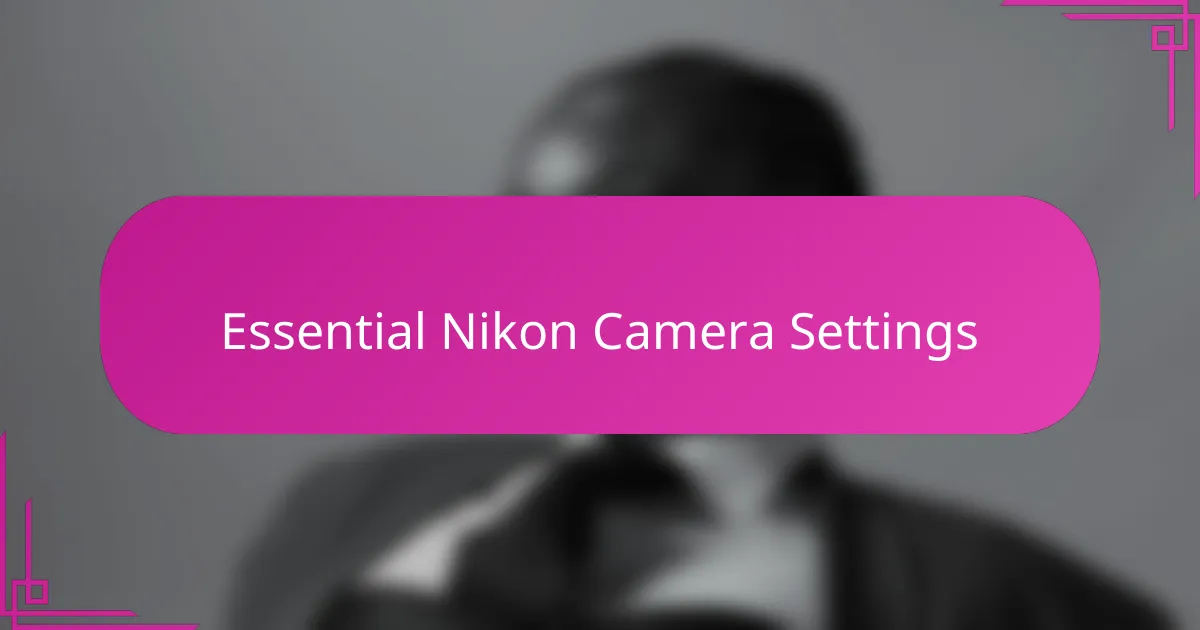
Essential Nikon Camera Settings
One setting I couldn’t overlook was the ISO, which controls the camera’s sensitivity to light. Early on, I tended to crank it up to avoid blurry shots, but I soon learned that keeping ISO as low as possible preserves image quality. Have you ever noticed how higher ISO can make photos look grainy? That lesson changed how I approached low-light shooting entirely.
Another crucial setting is the aperture, or as I think of it, the “creative” dial. Playing with f-stop numbers allowed me to blur backgrounds beautifully or keep everything sharp—depending on the mood I wanted to create. It felt empowering to realize that a simple twist could transform the entire atmosphere of a photo.
Shutter speed was a bit of a challenge at first—choosing between freezing motion or capturing blur can be tricky. I remember trying to photograph a running dog and adjusting shutter speed felt like a guessing game, but once I understood how it affects exposure and movement, controlling action shots became a fun experiment rather than a frustrating guess. Have you ever struggled with that moment where the shutter just won’t cooperate? I’ve been there.
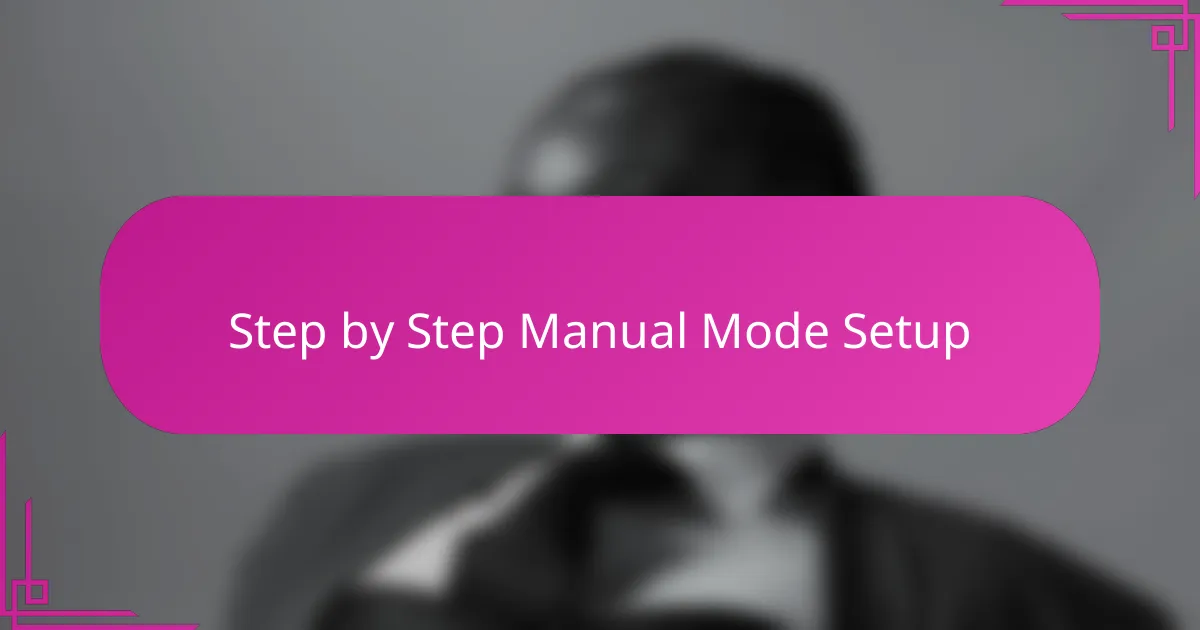
Step by Step Manual Mode Setup
Switching my Nikon to manual mode means diving into a few simple steps. First, I turn the mode dial to ‘M’—it’s like flipping a switch to tell the camera, “You’re not running the show anymore.” Then, I set my ISO based on the lighting—usually low to keep noise down unless I’m shooting in darker conditions.
Next up, I adjust the aperture to frame my scene just right. Remember how I mentioned the creative power of the f-stop? Well, here’s where it really comes into play. I twist the aperture ring or use the command dial to select an f-number that matches the mood I want—wide open for dreamy, blurry backgrounds or narrow for everything in sharp focus.
Finally, the shutter speed dial becomes my trusty friend to freeze or flow with motion. Early on, I relied on the camera’s light meter to guide me—if the needle was balanced, I knew I was close. Have you ever found yourself tweaking shutter speed, watching the exposure meter inch toward the center? That feedback loop gave me the confidence to experiment without fear of missing the shot.
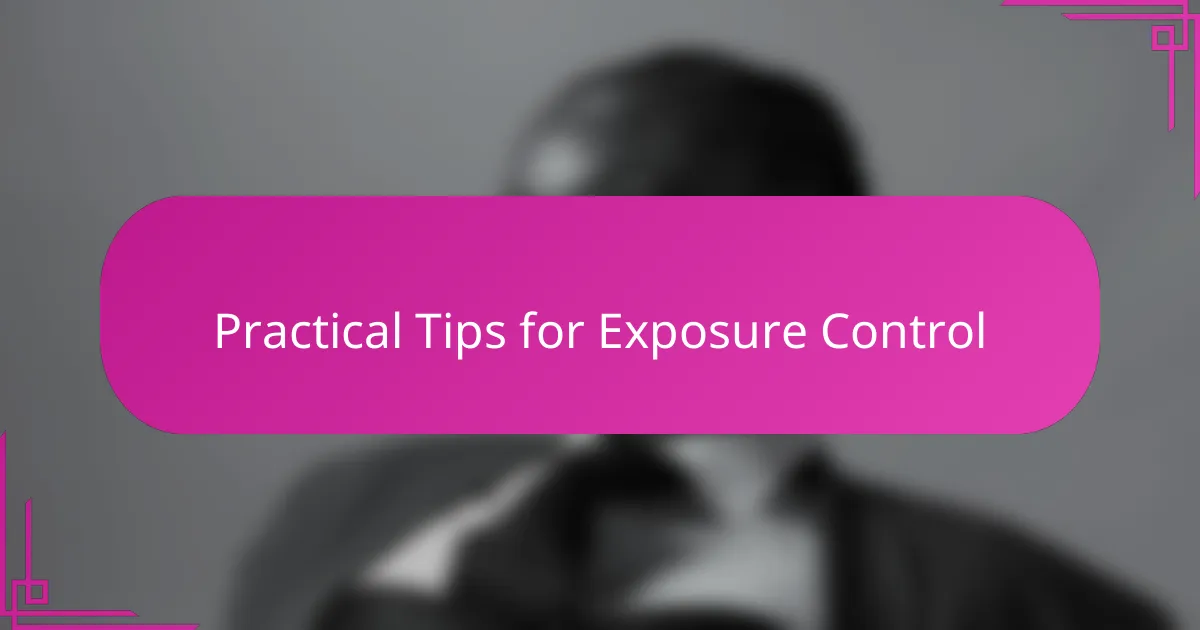
Practical Tips for Exposure Control
When it comes to practical exposure control, the first thing I learned is to keep an eye on the light meter inside the viewfinder. I used to ignore it, thinking my gut feeling was enough, but that little needle became my best guide. Have you ever seen that meter dance as you twist the dials? It’s like a mini drama unfolding right before your eyes, letting you know when you’re nailing the exposure or need to tweak a setting.
Balancing shutter speed, aperture, and ISO doesn’t have to be overwhelming. At one point, I started prioritizing shutter speed to capture sharp action shots, then compensated aperture and ISO accordingly—it’s like solving a puzzle. If your shutter speed is fast enough to freeze motion, but your image is dark, have you tried opening the aperture wider or nudging ISO up just a bit? Trust me, small changes can make a big difference without sacrificing quality.
Lastly, I found it helpful to bracket my shots—take multiple images at slightly different exposures. It’s a safety net that helped me learn what works in different lighting conditions without risking the perfect shot. Have you ever hesitated to move from auto mode because you feared missing the right exposure? Bracketing gave me the confidence to experiment freely, and that’s when manual mode started feeling less like a chore and more like a creative playground.
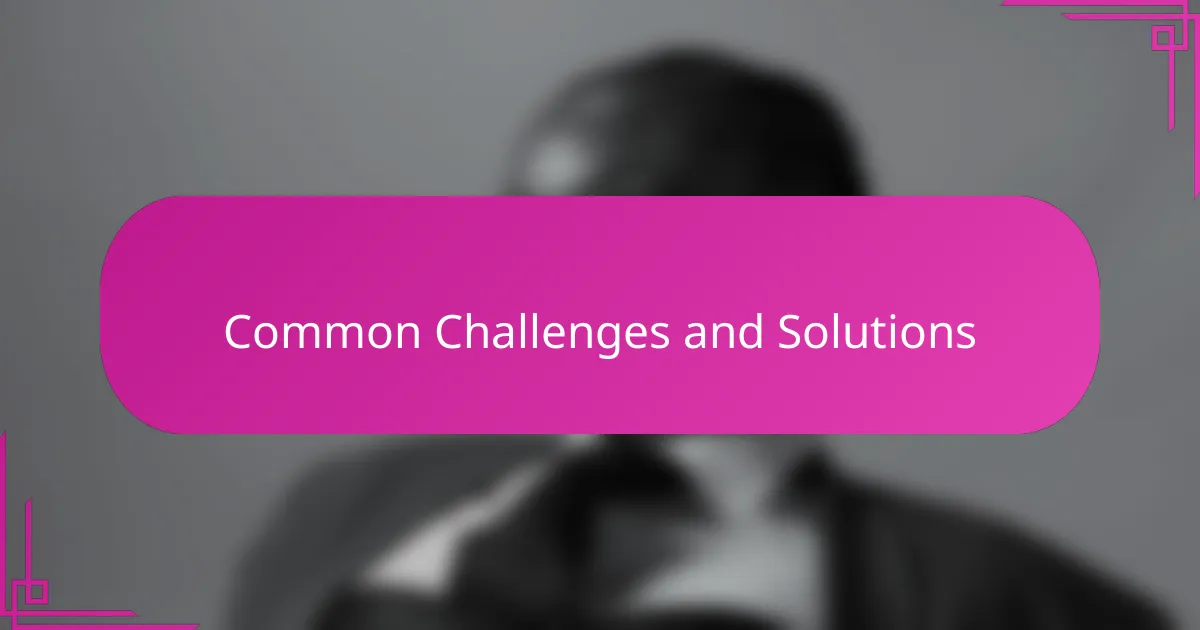
Common Challenges and Solutions
One challenge I faced early on was judging the right exposure without relying solely on the camera’s automatic hints. Have you ever stood there adjusting dials, only to feel unsure if your shot will be too dark or blown out? For me, learning to trust the light meter and then cross-checking with the LCD screen after shots helped me build that confidence over time.
Another tricky part was balancing shutter speed to capture movement without unwanted blur. I remember once trying to photograph kids playing soccer—the action was fast, and I kept getting blurry images. It took some trial and error, but eventually, I settled on a faster shutter speed paired with a slightly higher ISO, which made the difference. Have you noticed how small tweaks in settings can suddenly turn frustration into a winning shot?
Finally, adjusting aperture in unpredictable lighting proved challenging, especially when the scene had mixed light sources. I used to get overwhelmed choosing between preserving depth of field or letting in enough light. What helped me was practicing in different environments and embracing bracketing—shooting at several exposures to see which worked best. That safety net eased my nerves and made manual mode feel less intimidating.
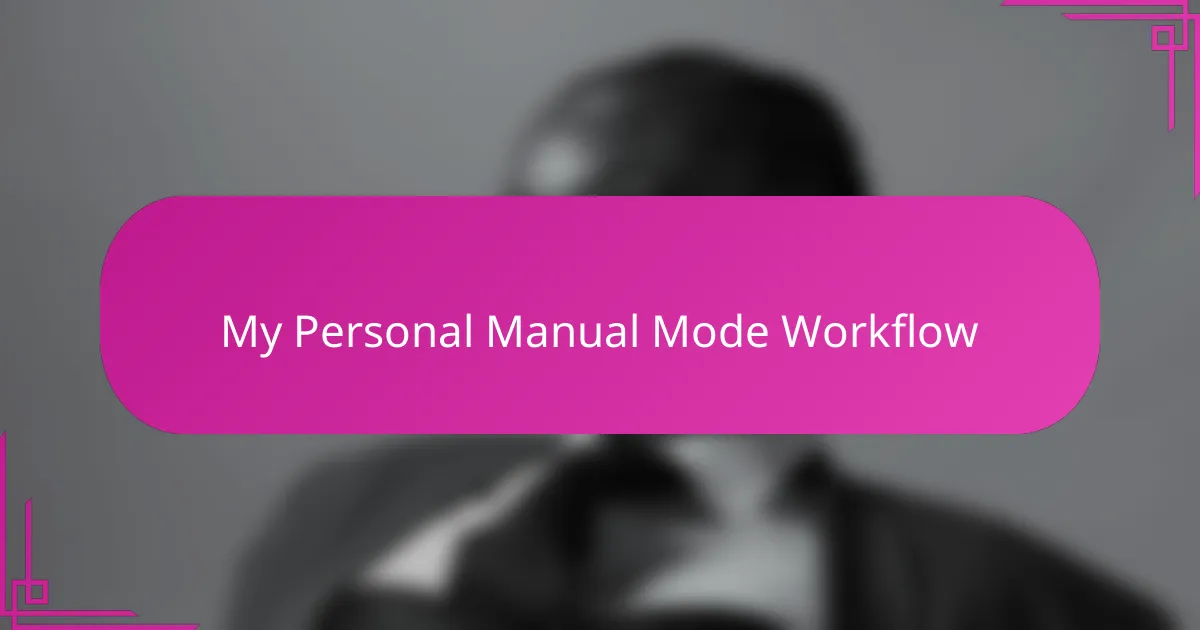
My Personal Manual Mode Workflow
My workflow in manual mode has evolved into a ritual that feels almost meditative. I start by locking in my ISO to minimize noise, then I fine-tune the aperture to set the mood—sometimes craving that velvety background blur, other times wanting every detail in sharp focus. Don’t you find it satisfying when these small choices come together to create something uniquely you?
Once those basics are set, I move on to shutter speed, the control that breathes life into motion—or freezes it in time. I often recall chasing the perfect shot of a bird mid-flight, adjusting shutter speed by tiny increments, watching the exposure meter like a heartbeat. It’s moments like these that make manual mode feel less like a technical hurdle and more like a creative dialogue with my camera.
One habit I’ve embraced is checking the exposure meter, then trusting my instincts enough to deviate when the scene calls for it. Have you ever overridden what the camera suggests and ended up with a photo that surprised you? Those experiments keep me curious and remind me that manual mode is as much about personal vision as it is about technical settings.

Enhancing Creativity with Manual Mode
Diving into manual mode really opened up a whole new realm of creativity for me. Instead of letting the camera decide, I got to play with light and shadow the way I imagined it. Have you ever felt that rush when you intentionally underexpose a shot to keep the mood mysterious, or opened your aperture wide to make your subject practically pop off the frame? That sense of control sparked a fresh enthusiasm in my photography.
Playing with manual settings encouraged me to think beyond the obvious. I found myself experimenting with slow shutter speeds to capture the flow of a bustling city at night or freezing a fleeting expression with a lightning-fast shutter. Each adjustment felt like composing a piece of music—sometimes delicate, sometimes bold—where I was the conductor guiding every note. Isn’t it amazing how manual mode lets you become an artist instead of just a photographer?
What truly transformed my approach was realizing that creativity thrives in constraints. Manual mode forced me to slow down, observe the scene carefully, and make deliberate choices. And even when things didn’t turn out as planned, those surprises often led to my most memorable shots. Have you ever embraced a mistake that ended up teaching you more than success ever could? That’s the kind of creative freedom manual mode offers, turning every frame into a personal story.